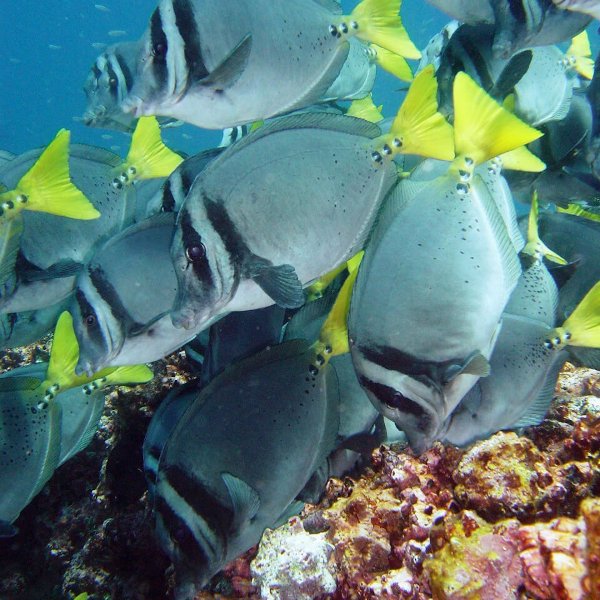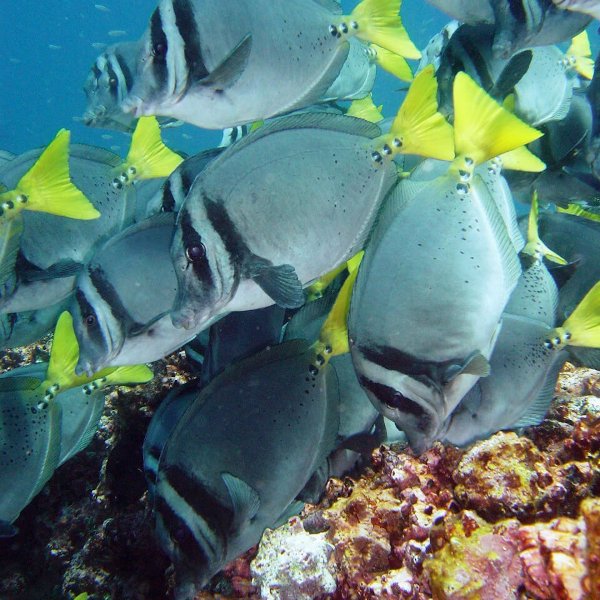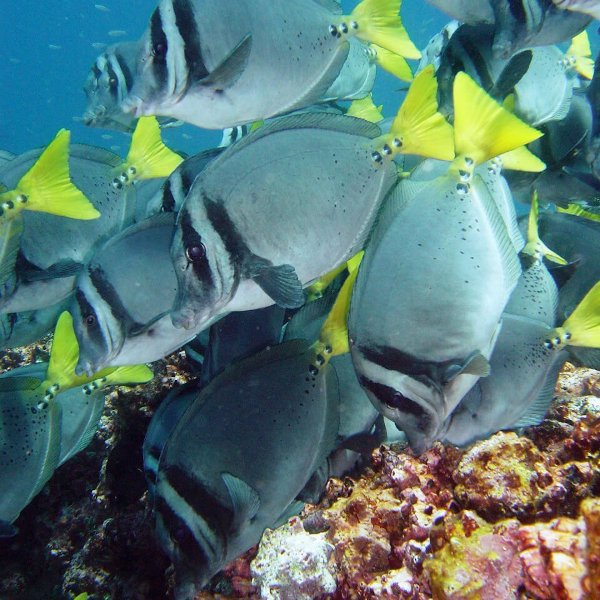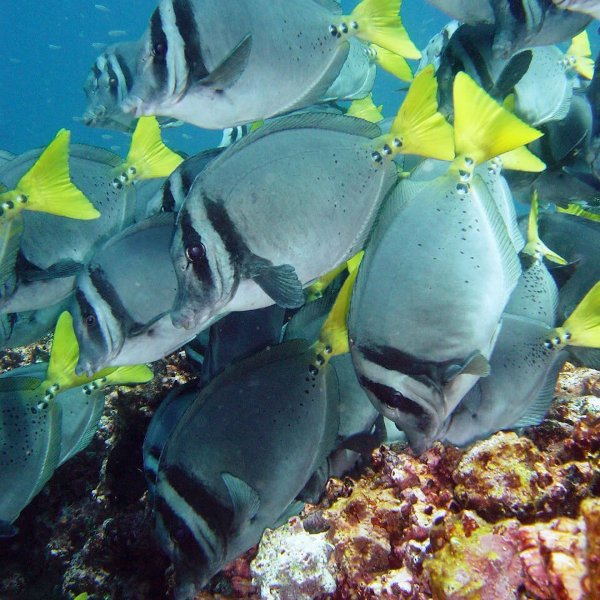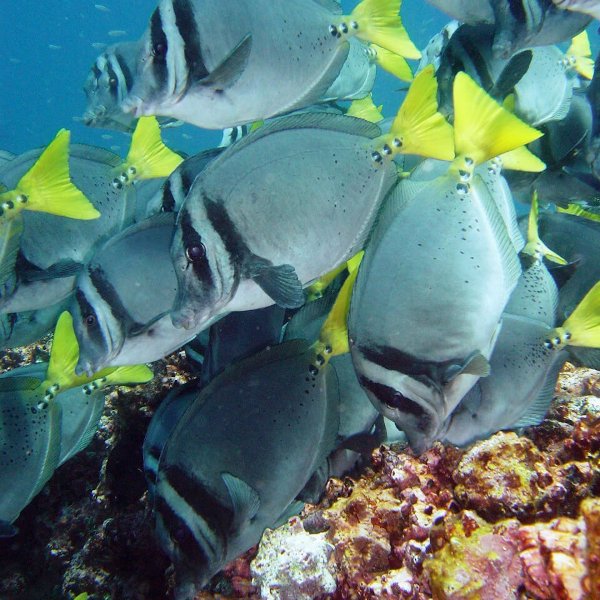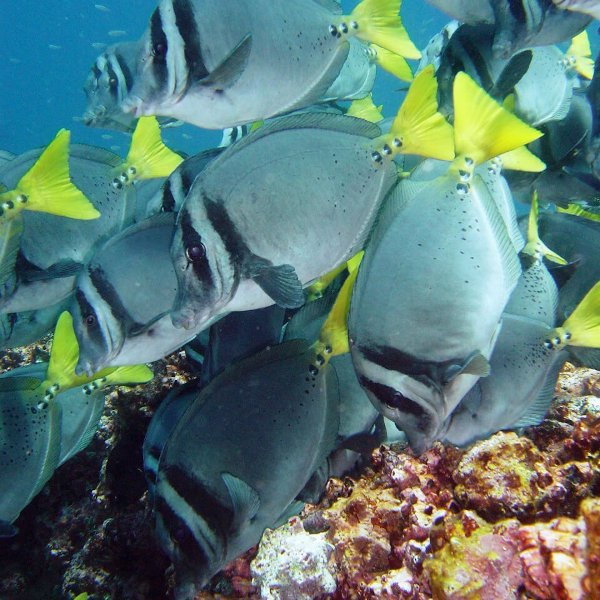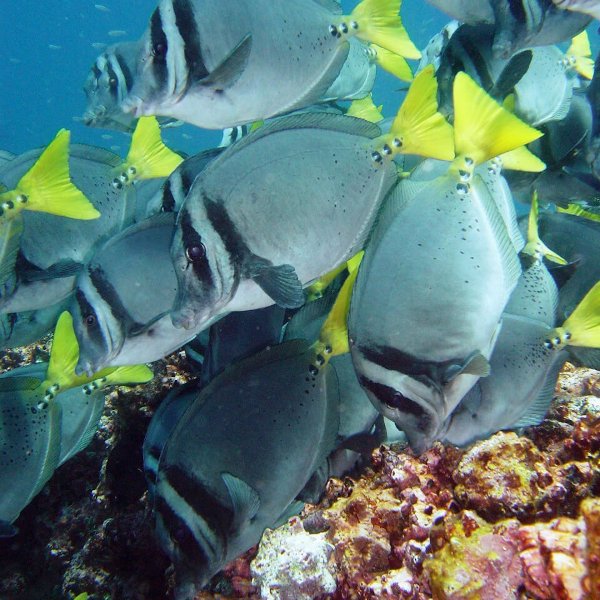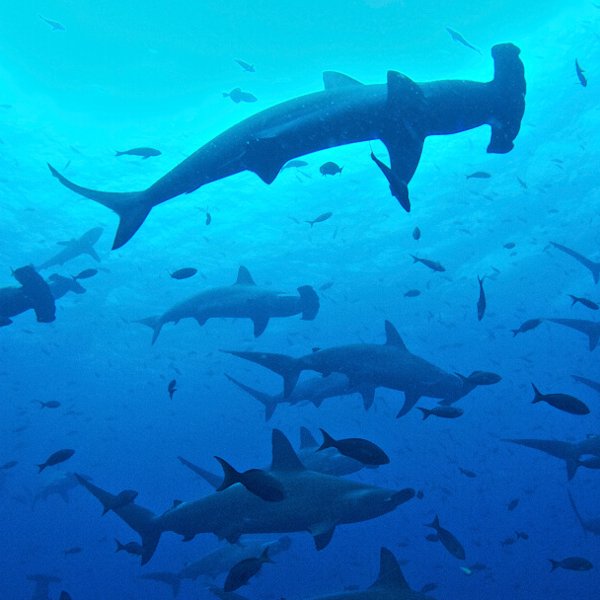Wolf
There is no landing site on the island, as the Galápagos National Park prohibited the landing on Wolf Island. However, it is a very popular diving site that you mustn't miss on your cruise. El Derrumbe or the Landslide diving point is one of the most famous in Galapagos, that gets its name from the shape of the slope, that looks like a landslide. The cold currents attract various species of sharks, like Galapagos sharks, hammerhead sharks, white-tipped sharks and even the great spotted whale shark. You can also encounter sea turtles, tropical fish, dolphins and rays here. This diving site is more appropriate for experienced divers, because of the jagged rocks and the currents that can get pretty strong sometimes. Wolf Island has other incredible diving sites you can visit on your trip, like The Elephant, Shark Bay, The Caves, The Anchorage, The Pinnacle and North Islet, also recommended for advanced divers.
On the island's cliffs, you can admire a variety of seabirds, including Nazca boobies, frigatebirds, red-footed boobies and the notable vampire finch. Because of the dry climate, this species of finch living on Wolf Island drinks the blood of other birds nesting on the island in order to survive. Although they peck the skin of other birds until they draw blood, this behaviour doesn't seem to harm them. The vampire finches also feed on booby eggs.
Wolf Island is an amazing destination, no matter the time of year, but you should keep in mind that weather differs depending on the time of year. From June to November the water is cooler and currents can be stronger, but the Humboldt current brings a lot of nutrients that attract a more diverse marine life. From December to May there are slightly fewer marine species, but the water is warmer and the diving experience can be more pleasant. You should check and book in advance during high season, which is from June to September and December to January, as there can be limited spaces.
- Wolf Island is the tip of an enormour extinct volcano, mostly underwater.
- Wolf Island's diving sites are famous for the various species of sharks you can encounter.
- The vampire finch on Wolf Island feeds on the blook of other birds nesting on the island.
Blue-Footed Booby, Galapagos Frigatebirds, Galapagos Fur Seal, Galapagos Green Turtle, Galapagos Sea Lion, Galapagos Sharks, Galapagos Sting Rays, Mobula Rays, Nazca Booby, Red-Footed Booby, Red-lipped Batfish, Sunfish, Whale Shark, Whales & Dolphins
Wolf Visitor Sites:












Bird Photography Tour: Ecuador Andean Choco & East Slope
Scheduled Group Departure 2023
Max group: 6 photographers!
Price: $3,600 USD
per person sharing double room
* Single supplement: $720
Dates:
2023
Length: 12 Days
Start / End city: Quito
Pace: Easy
Physical difficulty: Easy
Focus: Bird photography
Max group size: 6 photographers






